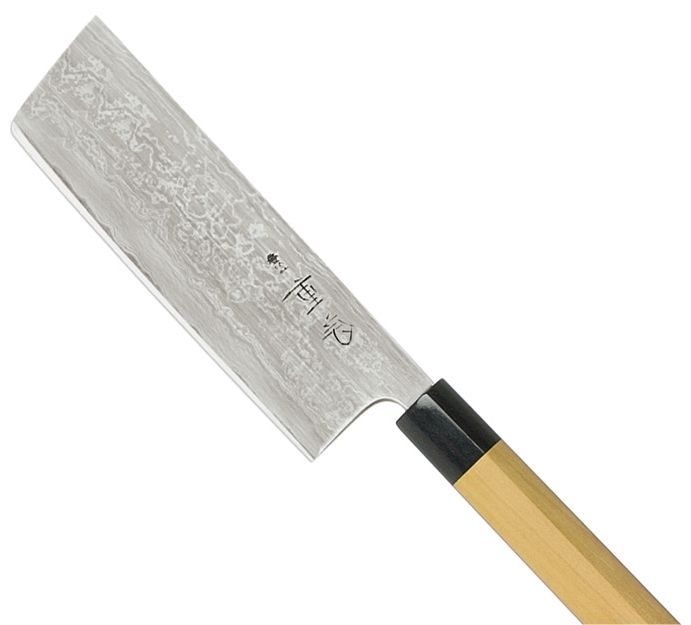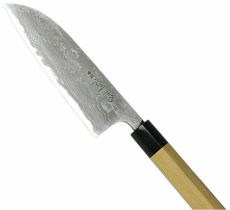

| Size / Weight / Qty | Price | Quantity |
|---|
Japanese chef's knives - generically known as hocho - have an unrivalled reputation for edge quality and retention and jaw droppingly beautiful aesthetics.
There are several manufacturing - or perhaps a better word is making - techniques because the best of these hocho are hand made by master smiths. The most renowned technique is lamination where a core of multi layered, high carbon, edge holding steel - often referred to as blue paper or white paper - is forged between rust resistant steel cheeks which serve to cushion the hard core steel, rust proof the majority of the surface of the blade and provide a softer layer where the master smith can leave his 'chop' or insignia.
Bear in mind that quality edge tools in woodworking and gardening use high carbon or tool steel for their cutting edges and it is a largely unavoidable trade off that this steel will rust.
In the kitchen so called stainless 'steel' - critics don't accept it as steel at all - has application as an edge steel for some Japanese hocho and it remains a passionate debate as to whether the stainless formulations match their traditional carbon steel counterparts.
Shigefusa Hocho
Master Shigefusa uses original materials to create knives in classical shapes following the strict code of traditional Japanese aesthetics. With meditative devotion, he creates the finest blades in his workshop using traditional swordsmithing methods. This includes forge welding of the individual layers in a charcoal furnace, forming of the blades with a scraper blade and then grinding and polishing by hand on a veritable arsenal of water stones.
This range has magnolia wood handles with buffalo horn ferrules.
Cutting edge of high-carbon steel (V1), hardness 64 HRC, not rustproof.
Care & Maintenence
 |
Santoku - General Purpose
Double bevel Blade 165 x 2.2mm 61 layers Overall 310mm Weight 150 gms Item Code: F8030 |
 |
Usuba Double Bevel Blade 160 x 2.0mm 61 layers Overall 310mm Weight 185 gms Item Code: F8031 |
|
|


